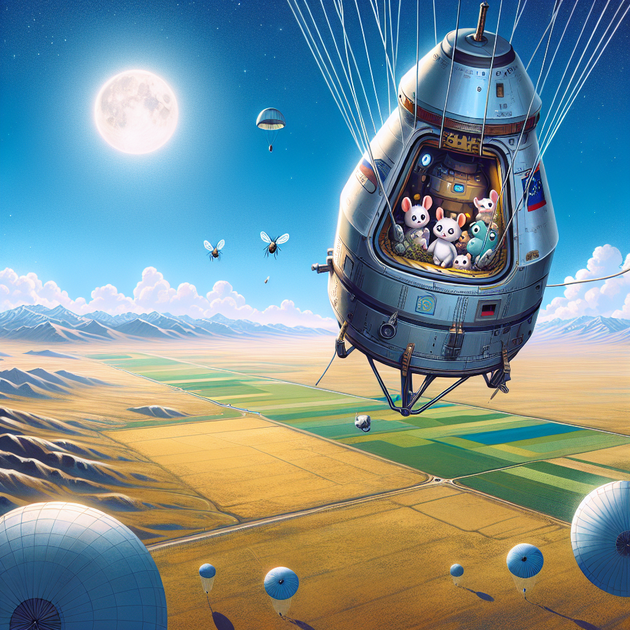What do you get when you cross outer space with a living cargo of 75 mice and over a thousand fruit flies? If you’re the Russian space program, the answer is a mission nicknamed the “Noah’s Ark” satellite—a real-life science experiment that just came back to Earth. Why send so many small creatures into orbit? Let’s take a look at this one-of-a-kind journey and what it can teach us about life beyond our planet.
Why Did Russia Launch a “Noah’s Ark” Satellite?
The idea behind the Noah’s Ark satellite is as classic as it is ambitious: mimic the conditions of long-term human spaceflight by using animals as stand-ins for astronauts. Since sending actual people on lengthy journeys can be risky (and expensive), scientists often rely on animals like mice and fruit flies to see how zero gravity and cosmic radiation affect living bodies.
The recent mission packed an impressive roster—75 mice and around 1,500 fruit flies—into an orbiting lab that circled Earth for several weeks. When the capsule finally touched down safely in Kazakhstan, it marked a major milestone in understanding how living things adapt (or struggle) far away from home.
What Was Life Like for Mice and Flies in Space?
You might picture these tiny astronauts floating around weightlessly—and you wouldn’t be far off. Inside the Noah’s Ark satellite, both species experienced microgravity for an extended period. For scientists back on the ground, every detail mattered:
- Microgravity effects: How did their muscles and bones hold up without gravity pulling them down?
- Behavioral changes: Did they sleep or eat differently? Were their social habits affected?
- Reproduction: Could they mate or lay eggs as usual?
- Health impacts: What about immune systems or stress levels?
All these questions help researchers piece together what future astronauts might face during long missions—maybe one day even trips to Mars.
The Science Behind Animal Astronauts
Using animals for research isn’t new; fruit flies were among the first living creatures sent into orbit back in the early days of the Space Age. Mice are also favorites because their genetics are surprisingly close to ours. The Noah’s Ark satellite continues this tradition but at a larger scale than usual.
Here’s why these studies matter:
- Cellular insights: Cells react differently under stress from cosmic rays or lack of gravity.
- Mental health clues: Social behavior changes could predict challenges for human crews.
- Biodiversity checks: Multiple species show how different organisms adapt—or don’t—to space.
It turns out that monitoring dozens of tiny mammals alongside swarms of insects gives researchers much more data than just sending one or two test subjects.
Anecdote: A Little-Known Space History Fact
Back when I was studying astronomy news as a student (long before this latest mission), I learned about Laika—the first dog in orbit—and how her journey sparked debates worldwide about animals in science. Today’s Noah’s Ark satellite builds on decades of similar missions but combines modern tech with greater care for its passengers. Unlike some earlier missions where animals didn’t make it back alive, most creatures aboard this flight survived—and researchers will now study them closely to understand every effect of their time among the stars.
What Could This Mean for Future Space Missions?
If we want to send people deeper into space—to Mars or even further—we need all the biological insights we can get. Experiments like those on Russia’s Noah’s Ark satellite offer crucial clues about how our bodies might change during months or years away from Earth.
Some big questions remain:
- Will humans face bone loss or muscle weakness like these mice did?
- Can we protect ourselves against radiation better than fruit flies can?
- Might we discover new ways to keep future astronauts healthy using lessons from these animal travelers?
We’re still putting the pieces together. But thanks to this unusual voyage—a real Noah’s Ark among satellites—we’re one step closer to solving some of humanity’s toughest challenges in deep space.
So what do you think—would you volunteer for a long ride on a next-generation “space ark,” knowing what we’ve learned from our brave animal pioneers?

Leave a Reply